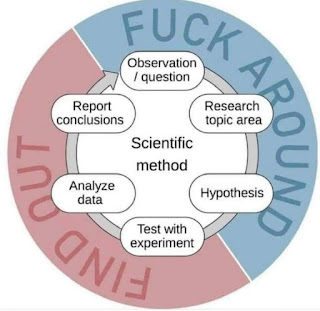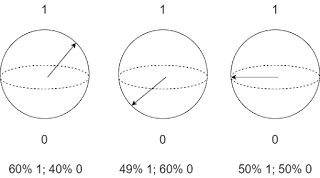Can you add two numbers with a quantum computer?
In the scientific method, your observation/measurement technique should not affect the outcome. If your hypothesis deals with effect of light on bugs and every time you check on the bugs with a torch, are you not causing the experimental result you will soon observe? In other words, if you did not check with a torch, would the outcome be the same?
This whole idea that a qubit could be 50% 0 or 50% 1 upon measuring and usually conveniently represented as an arrow in a sphere with the two hemispheres representing 0 and 1, what is the benefit? what is the point?
Imagine this scenario:
I want to add two numbers made of 2 qubits and get the result in a third qubit.
Number 1 is 49% 0 and 51% 1.
Number 2 is 51% 0 and 49% 1.
What is the value of the third qubit? is it 50% 0 and 50% 1? is it 100% 0? is it 100% 1?
If the answer is the first case, what does it mean anyway? is the output of the two numbers I added 0 or 1? is it neither or both? will it be 0 today and 1 tomorrow?
In the second and third case, what causes the decision that the answer is 1 or 0?
How would this be useful in any way?
If you ask me, then we have strayed from the original goal of a computer, which is to compute, i.e. did we add the two numbers? No, we did not. That is as far as quantum computing and I go.
A great read for aspiring quantum computing students and words of wisdom can be found here:
https://scottlocklin.wordpress.com/2019/01/15/quantum-computing-as-a-field-is-obvious-bullshit/


Comments
Post a Comment